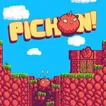


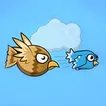

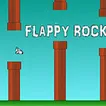

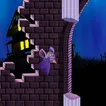
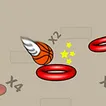
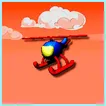

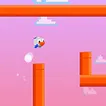

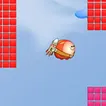


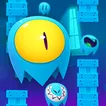
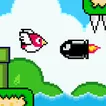


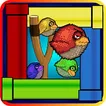







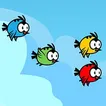
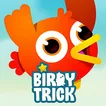












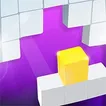




























Flappy Bird: The Game That Soared in Popularity and Its Lasting Online Presence
In a digital world teeming with complex games boasting high-definition graphics and intricate storylines, the emergence of a simple yet infuriatingly challenging game took the internet by storm. Flappy Bird, with its straightforward mechanics, required players to navigate a bird through a series of obstacles by tapping their screen to keep the bird afloat. The simplicity of the concept belied the difficulty it presented, leading to an addictive cycle of ‘just one more try’.
The game’s rise to fame was as rapid as it was unexpected. Players around the globe found themselves engrossed in the quest to improve their high scores, sharing their frustrations and triumphs on social media, propelling the game to viral status. However, just as the world was getting to grips with its newest gaming addiction, Flappy Bird vanished from app stores, leaving a void in its wake and sparking a media frenzy. The sudden disappearance only fueled the game’s legend, as discussions and speculations ran rampant among its fan base and the public alike.
Despite its absence from traditional app marketplaces, Flappy Bird found a second wind on the web. Utilizing the versatility of HTML5, the game transitioned smoothly to browser-based platforms, allowing it to continue its legacy. This online presence not only catered to nostalgic fans but also introduced the game to new audiences, ensuring that the simple yet maddeningly difficult gameplay of Flappy Bird remained just a click away. The game’s enduring popularity is a testament to the power of its core mechanics and the universal appeal of a challenge that is easy to understand but hard to master.
Flappy Bird’s Unprecedented Rise to Fame and Its Sudden Disappearance
The ascent of Flappy Bird to the zenith of app popularity was a phenomenon that captured the attention of casual gamers and industry observers alike. Released into a sea of mobile games, it distinguished itself with its uncompromising difficulty and retro style. The game’s premise was deceivingly simple: tap the screen to flap the bird’s wings, guiding it through narrow openings between pipes. Yet, this simplicity was the catalyst for its addictive nature, as players became determined to surpass their own high scores and those of their friends.
Word of the game spread like wildfire, with its popularity peaking in early 2014. It seemed everyone was playing Flappy Bird, and the game’s success was reflected in its towering download numbers. Social media platforms buzzed with shared experiences of triumph and defeat, each post serving to draw in new players eager to see what the fuss was about. The game had become more than just a pastime; it was a cultural touchstone, a shared digital experience that transcended borders and languages.
However, at the height of its fame, the game was abruptly pulled from app stores, leaving a community of players stunned and bewildered. The sudden disappearance only added to the game’s mystique, as players clamored for answers. Theories abounded, and the void left by the game’s removal was filled with discussions, tributes, and a clamoring for its return. The game’s withdrawal from the marketplace did little to dampen the enthusiasm of its fanbase; instead, it solidified Flappy Bird’s status as a legend of the mobile gaming world, a game that flew too close to the sun and, in doing so, left an indelible mark on the hearts of those who played it.
Understanding Flappy Bird’s Addictive Gameplay Mechanics
At its core, Flappy Bird’s gameplay is a masterclass in simplicity. The player has only one objective: to keep the bird in flight for as long as possible. The action required is equally straightforward – a single tap on the screen makes the bird flap its wings and ascend briefly, while the absence of tapping allows it to fall. This tap-and-float mechanic, while easy to understand, is deceptively difficult to master due to the precision required to navigate through the evenly spaced pipes.
The game’s difficulty is finely tuned, with each set of pipes positioned just far enough apart to allow the bird through, but close enough together to punish even the slightest miscalculation. The bird’s gravitational pull is relentless, and the game’s physics are unforgiving, creating a high-stakes environment where each tap could lead to a new high score or an abrupt end to the game.
This relentless challenge is what hooks players. The gameplay loop is quick to restart, which reduces the downtime between failure and a new attempt. Each playthrough offers an opportunity to beat a personal best or climb the ranks on the global leaderboard, providing a constant incentive to improve. The game’s design leverages the psychological principle of intermittent reinforcement – the unpredictable rewards of surpassing a previous high score are highly motivating and keep players engaged.
Moreover, the game’s minimalistic design and absence of complex elements mean that the player’s focus is never divided. There are no power-ups, no level-ups, and no changes in gameplay – just an endless series of pipes and the relentless pursuit of a higher score. This undiluted experience is what makes Flappy Bird not just a game, but a pursuit of perfection in the face of seemingly insurmountable odds.
Flappy Bird Online: How the Game Found New Life on the Web
Despite its disappearance from mobile app stores, Flappy Bird’s legacy was far from over. The game’s simplistic design made it an ideal candidate for web adaptation, and soon it fluttered onto browsers worldwide. By leveraging HTML5, a versatile technology for creating web content, Flappy Bird was reborn online, accessible to anyone with an internet connection.
The transition to the web meant that Flappy Bird was no longer tethered to a specific device or platform, broadening its reach and ensuring its continued relevance. The online version maintained the original’s addictive gameplay and challenging mechanics, allowing both long-time fans and new players to experience the thrill of guiding the pixelated bird through perilous pipes.
The game’s online presence also meant that it could be easily shared and embedded across various websites, forums, and social media platforms, further cementing its place in the gaming community. The simplicity of accessing the game through a browser brought in a wave of players who might have missed the original mobile phenomenon, while also providing a dose of nostalgia for those who had eagerly tapped their screens years before.
Flappy Bird’s online iteration proved that a game doesn’t need the latest graphics or complex narratives to capture the hearts of players. It highlighted the timeless appeal of a well-crafted challenge and demonstrated the potential for games to find new life in the ever-evolving digital landscape. The enduring popularity of Flappy Bird online is a testament to the game’s universal charm and the joy of simple, yet endlessly engaging, gameplay.